- Home
- Mildred A. Wirt
Dan Carter and the Great Carved Face Page 6
Dan Carter and the Great Carved Face Read online
Page 6
CHAPTER 6 ANOTHER LOSS
The meeting with the two Indians had excited all the Cubs and as theyhiked back to the day camp, they could discuss no other subject.
"Did you notice Eagle Feather's belt?" Dan asked the others. "It had bigdiscs of silver strung together on leather."
"Seeing it gave me an idea," declared Brad enthusiastically. "We'll wantto make some fancy Indian costumes for our pow-wow. We can rig up calicoshirts and slit denim trousers up the side. But we'll need belts to setoff the outfits."
"Maybe you can wheedle one from the Indians," Red twitted.
"I've got a better idea. We'll make em!"
"Know anyone that owns a silver mine?" Midge scoffed.
"No, but the tops of peanut butter cans will do just as well. We can usethe metal discs, punch them with holes and string them on leatherstraps."
"Say, that's a good idea!" Dan approved instantly. "Wouldn't cost us acent either."
"I know what would snap up our pow-wow more than anything else," declaredFred. "A couple of real Indians!"
"White Nose and Eagle Feather, for instance?" chuckled Chips, steppingover a fallen tree on the trail.
"Sure. Why not?"
"We'll appoint you a committee of one to arrange it."
"Mr. Hatfield might do it," interposed Brad, taking Chips' suggestionhalf seriously. "Those Indians are well educated and they might bewilling to cooperate with the Cub organization. The only trouble is, wedon't know where they're staying in Webster City."
"Or what brought them here," added Dan soberly. "I didn't like all thattalk about searching for one of their brothers. They were too grim. Tome, it had an ugly sound."
"They seemed to think that the person they're after carved the face onthe cliff," remarked Mack. "That deepens the mystery."
"I wish Professor Sarazen of the Webster City College art staff could seethat carving," Brad said thoughtfully. "If I get a chance, I think I'lldrop around at his place and tell him about it."
The Den Chief had been swinging along through the forest at a smooth butfast pace. Now, coming to a little brook, he paused abruptly.
"Whad'you see?" demanded Dan, who was directly behind.
Without answering immediately, the older boy bent down to examine a crudesnare which had been built across a game run near the stream bank."Someone's been hunting for rabbits here!" he exclaimed.
"And hunting is illegal in the metropolitan park preserve!"
"Sure, it is. Notice anything unusual about this snare!"
Dan nodded. "I saw some pictures like it in those Indian books I read."
"It's an Indian snare all right."
"Maybe White Nose and Eagle Feather set it up here," Fred speculated.
"Maybe," agreed Brad, his voice trailing off.
He pocketed the snare, and the Cubs went on to the day camp.
So much time had been lost that the boys knew they would have to workfast to complete their hogan before dark. During their absence, Mr.Hatfield and Mr. Holloway had started the frame of the hut. Bent boughshad been tied firmly together with leather and cords.
"The Navajos have eight different types of houses," the Cub leaderinformed the boys as they worked. "The dwelling is erected in a singleday, for all the neighbors come in to help. On the reservations, they'reusually made of pinon logs, cedar bark, an earth roof, and the chinksfilled with mud."
For an hour the Cubs labored, taking satisfaction in seeing the hogangrow slowly but surely.
"There!" Brad declared in satisfaction, as the square doorway was nailedon, "it's finished! I call it a dandy job too!"
"You do?" demanded a voice from behind him.
Brad whirled to see Ross Langdon standing there, a grin on his face.
"Oh, hello, Ross," Brad greeted him, trying to make his voice cordial."Didn't hear you come up."
Ross had been studying the hogan, and obviously was impressed by thework. But he would not say so. He sauntered over and leaned ratherheavily against the doorway.
"Hey, Ross!" exclaimed Dan, dropping his hammer. "Don't do that. Youmight knock the thing down."
"Why should I bother?" Ross retorted loftily. "A good strong wind willtake care of it. Den 1 has a much better hogan. We really did a job."
"Glad to hear it," Dan replied, refusing to take offense.
Ross' unexpected arrival in camp did not please the other Cubs. Chips, inparticular, had not abandoned his belief that the Den 1 boy had beenresponsible for the loss of the painted paddle. He now eyed himsuspiciously.
"What brings you here so often, anyhow?" he demanded.
"Oh, just looking around."
It was on the tip of Chips' tongue to accuse Ross of taking the missingpaddle. However, a warning glance from Brad caused him to lapse intosilence.
Ross moved away from the hogan toward a site on the beach which Danpainstakingly had cleared in preparation for making a large sandpainting.
"What's going up here?" the Den 1 boy asked curiously.
"Oh, just a surprise feature for the pow-wow," Dan told him. "An addedattraction."
"We may have a few other surprises to spring too," hinted Red.
"Such as?"
"Real Indian stuff," Red informed him. "Maybe some Indians."
This was too much for Ross. "Fat chance of digging up a live Indian inWebster City," he scoffed. "You're just doing a lot of silly talking."
Darkness was settling over the treetops, so Mr. Hatfield brought thefriendly argument to an end by saying it was time to end the work forthat day.
"It looks a little like rain," he observed, squinting at the sky. "We'llhave to take our tools inside tonight."
"Some of the stuff can be loaded into the canoe and paddled down streamto the cabin," suggested Mr. Holloway.
Brad and Dan, aided by Fred, quickly gathered up the more cumbersomeitems, stowing them in the craft. Mr. Hatfield supervised the loading.
He intended to assign Brad and Dan to take the canoe in, with Mr.Holloway riding along to supervise the job.
Before he could do so, Ross grabbed up one of the paddles.
"Let me help," he offered.
"Well, what d'you know?" Chips muttered, his mouth sagging open.
Without waiting for anyone's consent, Ross stepped into the canoe. He andMr. Holloway shoved off and with deft, sure strokes paddled downstreamtoward the nearby Holloway cabin.
"Ross certainly turned cooperative fast," Dan muttered. "You could pushme over with a hummingbird's feather!"
"Look at that boy paddle!" murmured Midge in grudging admiration. "He'sgood!"
"That's why he grabbed a paddle," Red said contemptuously. "He wanted toshow off."
"He'll win the canoe race for Den 1," Midge declared with misgiving.
Dan and Brad watched Ross silently and without envy. Each summer theLangdon boy spent several weeks at his parents' cottage on Lake Elmo andquite naturally had acquired a high degree of skill at all types of watersports.
The two Den 2 Cubs knew full well that they would be up against toughcompetition in the race. They wanted to win for their organization.Though they made no comment, both silently determined to practice harderthan ever before in an effort to at least give Ross a run for his money.
In the next few days, the Cubs spent all their spare time either workingat the camp or otherwise making preparation for the coming pow-wow.
One night after school, Dan, Brad and Midge canvassed severalneighborhoods in search of items to be exhibited and also clothing to besent to the Navajo reservation.
By design, Brad included the home of Professor Sarazen as one of theirstops. Mrs. Sarazen gave the boys a bundle of clothing and showed them ahalf dozen beautifully woven Navajo blankets which her husband hadacquired on a trip West.
"Would you like to have one of them for your pow-wow?" she inquired."They're all very fine blankets."
"Gee! We'd sure like to have one, if you aren't afraid it migh
t bedamaged!" Dan exclaimed gratefully.
"I've loaned things to the Cubs before," Mrs. Sarazen said, smiling."They're very dependable, I've learned."
Removing one of the smaller blankets from a cedar chest, she spread itout on the floor for the boys to see.
"This is a ceremonial blanket, often called a _Yeibitchai_ or asand-painting rug," she explained. "The first of this type was made in1910 by Hosteen Tia, a Navajo medicine-man."
"Why do they call it a sand painting rug?" Brad asked curiously.
"Each rug is a replica of a sand painting," Mrs. Sarazen explained.
"Say, maybe we could make our sand painting like this blanket!" Danproposed. "It's an awfully complicated design though."
"It is that," agreed Mrs. Sarazen. "Almost too intricate, I'd judge, forduplication."
The blanket was largely woven in black and white. It was characterized byfigures representing twelve rattlesnakes.
Mrs. Sarazen told the Cubs that the original sand painting from which theblanket had been copied represented a ceremony connected with asnake-bite cure.
"Take the blanket along now," she urged. "If the design isn't toointricate, use it for your own sand painting."
Just then Professor Sarazen sauntered in from the garden. He told theboys more about Navajo blankets, tribal customs and habits.
In turn, Brad related how the Cubs had come upon the strange carved faceon the cliff wall.
"I must see that carving for myself!" Professor Sarazen exclaimed. "Fromyour description, I doubt that it was made by any Webster City sculptor."
Dan was pleased to have acquired a genuine Navajo blanket. The next nightafter school, he and Brad took it to the river camp to show to the otherCubs.
Mr. Hatfield especially, was impressed by the fine quality of theweaving.
"This is too fine a blanket to keep here until the pow-wow," he declared."Since Dan is in charge of the sand painting, why not make him custodianof the blanket?"
"In that case, I want to take it home with me," Dan returned promptly."That is, until the day of the pow-wow."
"I was going to suggest that, Dan."
Using the blanket's base design, the Cubs made a rough sketch of the sandpainting. Then they began to block out the main outline on the beach.
They were hard at work when an elderly man sauntered into camp. Daninstantly recognized him as Professor Sarazen, and rushed to welcome him.
"Making good use of that blanket, I see," commented the teacher.
After admiring the start which the boys had made on the sand painting, heremarked that he had come, hoping someone would show him the carving atthe ravine.
"I'll be glad to guide you to the spot," Dan offered.
"So'll I," chimed in Chips, eager for a little diversion.
"Wouldn't mind a little hike myself," added Fred quickly.
Mr. Hatfield laughed, remarking that he thought all the Cubs wanted togo.
"Mystery always is more intriguing than work," he chuckled. "But then,we're well along with our preparations for the big pow-wow. The hogan isfinished, the sand painting started, and we expect to get at our WellsFargo station in a couple of days. Let's all knock off, and go to thecliff."
The Cubs were hopeful that Professor Sarazen would be impressed by thegreat carved face. Nor were they mistaken.
Upon reaching the ravine, he made a careful inspection of the work,declaring it to be Indian in origin.
"A somewhat crude carving," he told the Cubs, "but the work of a man ofgreat talent. Amazing that such a face could be created here and no onehave seen the artist."
After Professor Sarazen had studied the face awhile, viewing it fromseveral angles, the group returned to the river camp.
"Time to break up for tonight, boys," Mr. Hatfield said. "See you alltomorrow after school--same time."
As the other Cubs gathered up their belongings, Dan went to the hogan forthe Navajo blanket. He was gone a long while. When he came out of thehut, he went directly to Mr. Hatfield.
"I can't find the blanket Professor Sarazen let us have," he saidnervously. "Did you put it anywhere?"
"Why, no, Dan. I saw you put it inside the hut myself."
"Just before we all left for the cliff," Dan agreed.
"It must be there."
Dan shook his head. "It's gone--stolen," he said miserably. "It wasvaluable too. How am I going to face Professor Sarazen?"

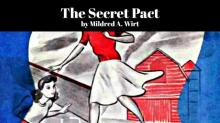 The Secret Pact
The Secret Pact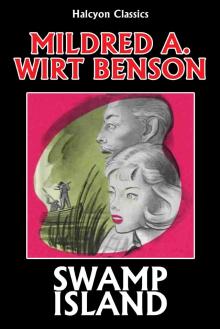 Swamp Island
Swamp Island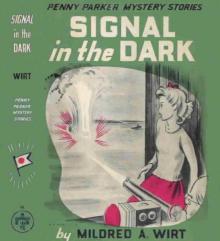 Signal in the Dark
Signal in the Dark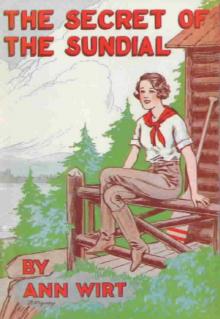 The Secret of the Sundial
The Secret of the Sundial The Wishing Well
The Wishing Well Whispering Walls
Whispering Walls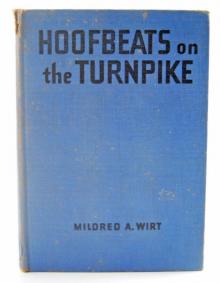 Hoofbeats on the Turnpike
Hoofbeats on the Turnpike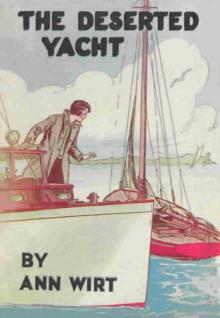 The Deserted Yacht
The Deserted Yacht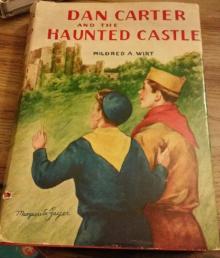 Dan Carter and the Haunted Castle
Dan Carter and the Haunted Castle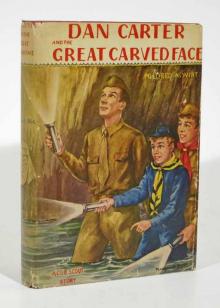 Dan Carter and the Great Carved Face
Dan Carter and the Great Carved Face Saboteurs on the River
Saboteurs on the River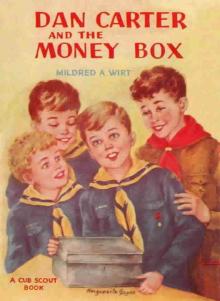 Dan Carter and the Cub Honor
Dan Carter and the Cub Honor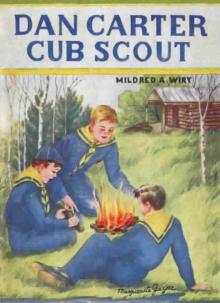 Dan Carter-- Cub Scout
Dan Carter-- Cub Scout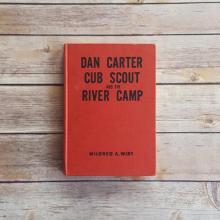 Dan Carter, Cub Scout, and the River Camp
Dan Carter, Cub Scout, and the River Camp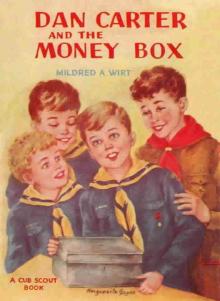 Dan Carter and the Money Box
Dan Carter and the Money Box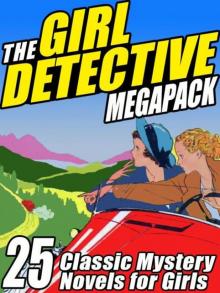 The Girl Detective Megapack: 25 Classic Mystery Novels for Girls
The Girl Detective Megapack: 25 Classic Mystery Novels for Girls